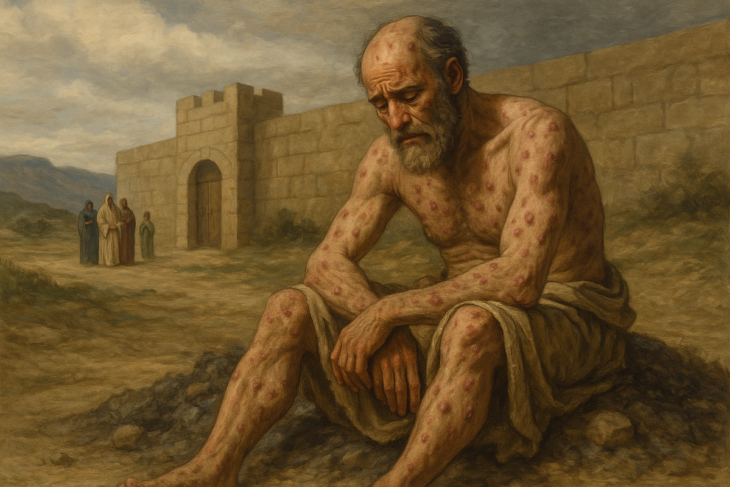
While growing up, this writer was often told that he had to go through a period of incubation having been born two months shy of nature’s full nine-month gestation period. To complete the course of nature that began in his mother’s womb, the process had to be surrendered to an incubator, artful by Man’s design if not by that of Mother Nature.
It is sobering to be reminded that childbirth can end in the death of mother, child, or both. Joyous outcomes are not assured. Therefore, whether in or out of the womb, this period of gestation when a foetus develops to the point of relative independence from his or her mother is a time of delicate vulnerability.
The advance of history, for good or for ill, has striking resemblances to the incubation process. Indeed, from the moment of conception, there is that great vacillation between the awareness that “anything could go wrong” along the path of development, and the hope that “everything will turn out alright”. Arguably, so has been the shaping of history, as seen with world events and world leaders that ultimately became catalysts for the next stage of our collective evolution.
With regard to world leaders, it sometimes seemed they were incubated by fate within predetermined spans of time, as if to develop them as agents who would orchestrate incredible feats of social, cultural, religious, philosophical, political, and economic transformation.
Consider, for instance, the apostle Paul. For three years after being struck down by a blinding light from heaven, Paul sought the face of God and studied Scripture in seclusion, in the desert. When he ended that period of incubation, his ministry turned the whole world upside down, causing reverberations even within the walls of Caesar’s palace.
Out of those tenuous, transformative years of searching and development came forth change which is still experienced today, centuries after the fact, through the 13 epistles that he wrote to the Christian church. Through his work, the epicurean nature of the Roman world was disturbed and its hitherto unchecked penchant for brutality was challenged by sacrificial love. The empire perished, but Christianity lives on.
There are other examples — some famous and some infamous.
Vladimir Lenin, after years in exile and a protracted period of thought and discussion, was crucial to the success of the long and bloody Russian Revolution which raged between 1905 and 1914. Adolf Hitler wrote Mein Kampf while he was in prison, his eventual release leading to the atrocities of World War II. Nelson Mandela studied the literature of his adversaries in prison for 27 years before helping to establish the Democratic Republic of South Africa, peacefully. Truly, many world events developed out of long, painful periods of thought, planning, and experimentation before coming to fruition.
The Black American experience is no exception. Its incubation has been in process beginning with hundreds of years of slavery, through emancipation from chattel slavery by way of the 13th Amendment, adopted on December 18, 1865, and on through to the present struggles of 21st century America. Black America has been on a quest not only for an identity free of the wattle and daub of the derisive adjective of “negro”, but also for independence in the truest sense, as deserved by any race. As a consequence, Black America has tinkered throughout its history with such notions as “Integration” and “Separation”. It has explored “Black Nationalism”, as well as different strains of “Pan Africanism”, watered by a rich pantheon of Afro-American thought. It has inched forward, couched in strident political, social and cultural activism.
Still, the struggle of Black folk in the 21st century suggests that Black America is yet to reach its long sought-after zenith of self-actualization. The coming together of head, of heart, and of hands has been hindered by the forces of bigotry, fear and selfishness from its very first groanings. There is a twisting, a turning, and a kicking against the status quo from within. The country at large must realize that it will never be allowed to rest until the full development of that which it treats as a bastard seed is allowed to mature into full sonship. Gestation is well past due and, in this instance, a stillbirth will only end up killing both mother and child. These are not just the sentiments of this writer, but those of the U.S. Federal Government.
The Moynihan Report is a U.S. Federal Government document that was published in 1965. The report, which was largely ignored, addressed the multifaceted effects of racism on Afro-Americans, especially with respect to its deleterious effects on the Black family. The report asserted that:
“There is probably no single fact of Negro American life so little understood by whites. The Negro situation is commonly perceived by whites in terms of the visible manifestations of discrimination and poverty, in part because Negro protest is directed against such obstacles, and in part, no doubt, because these facts which involve the actions and attitudes of the white community as well. It is more difficult, however, for whites to perceive the effect that three centuries of exploitation have had on the fabric of Negro society itself. Here the consequences of the historic injustices done to Negro Americans are silent and hidden from view. But here is where the true injury has occurred: unless this damage is repaired, all effort to end discrimination and poverty and injustice will come to little.”
Yet another federal document — The Kerner Report: The National Advisory Commission on Civil Disorders — was ordered by President Lyndon Johnson in response to Afro-Americans rioting in the streets across the nation in the summer of 1967. The U.S. Federal Government wanted to understand what factors were driving the riots. The document was published in 1968 after seven months of investigation. It attributed the riots to a lack of economic opportunity for African Americans and Latinos, failed social service programmes, police brutality, racism, and the orientation of national media to white perspectives.
The 426-page report was a bestseller. The panel included 12 people, among them the Governor of Illinois, senators, congressmen, the Mayor of New York, the Atlanta police chief, prominent businessmen, the director of the NAACP, and the Commissioner of Commerce from the State of Kentucky. All were male, except for one woman, and all were white, except for two Blacks.
These reports preceded the controversial Critical Race Theory (CRT) movement of legal circles which began in 1989 as a way of understanding how American racism has shaped public policy. Before Black people took to the streets to protest the lynching of George Floyd by police in the summer of 2020, under the banner of Black Lives Matter, the findings of the aforementioned reports were eased out of the limelight of politics and muted in nearly all public fora on race and racism. They were swept to the side for a more politically expedient “law and order” approach to the issues, rather than for methods that were likely to be more reflective of fundamental, pragmatic, efficacious, transformative, and enduring outcomes.
The Kerner Report was attacked then — just as Critical Race Theory (CRT) and Black History are being attacked now — by Richard Nixon and his surrogates during his presidential campaign in a manner that was strikingly similar to that of today’s Republicans whose sights are set on the midterm elections of 2022 and on the presidential election of 2024. Déjà vu!
The cries of protest today, therefore, mean that Black people ain’t crazy! History and Social Science data have substantiated their assertions. Racism is the proverbial fly in the ointment. Racism is systemic. Racism is as subtle as it is overt. Racism is just as oppressive, debilitating and deadly as ever. Racism is as much a sinister and formidable force today as it was yesterday. Its reality is not all in the heads of Black people as some do suppose. And they need no documents or reports authored by whites for validation. Déjà vu!
America has refused to come to the realization that, at her founding she had actually conceived conjoined twins, both sharing vital organs and appendages. They were constituted by a strange union of freedom and of slavery. To have attempted, therefore, to separate them at birth would have been as deadly as to favour one over the other in tangible ways through the passage of life. Such an approach would have been suicide. And so, as Afro-Americans are still in the throes of becoming, this is also true of America as a whole. They are in an incubation process within the womb of American history that does not have to be fatal. But if misguided members of our body politic are allowed to have their way, then it will most certainly be so.
Afro-Americans have survived much travail. For a race often set at naught by their detractors, with paralyzing handicaps imposed upon them, they have, amazingly, accomplished a great deal. Against tremendous obstacles, they are still, in many respects, in a state of becoming. But their “grace under fire” must never be taken for weakness. White America, therefore, should heed the pangs of distress caused by their pushing against oppression, and not view them as harbingers of inevitable loss and death, but as stars in the night before a glorious dawn. Destroying the prison will free both the jailers and the inmates. The lessons from the aforementioned government reports are still quite relevant today. And so, listen America. Listen!
Remember Nat Turner? Remember Harriet Tubman? Remember Sojourner Truth? Remember Frederick Douglass? Remember Booker T. Washington? Remember Ida B. Wells? Remember W.E.B. Dubois? Remember Paul Robeson? Remember Malcolm X? Remember Martin Luther King, Jr? All those lives were symbolic of birth pains of change. Such passion exists today, just as it did for Patrick Henry, a white revolutionary founding father, when he said, during the nation’s incubation period before the birth of the Republic, “Give me liberty, or give me death!”
An assertion from The Moynihan Report bears mentioning here:
“Liberty and equality are the twin ideals of American democracy. But they are not the same thing. Nor, most importantly, are they equally attractive to all groups at any given time; nor yet are they always compatible, one with the other. Many persons who would gladly die for liberty are appalled by equality. Many who are devoted to equality are puzzled and even troubled by liberty. Much of the political history of the American nation can be seen as a competition between these two ideals….”
This writer is convinced that this does not have to be the case. These conjoined twins — just as white people and minorities have been bound together by cords of human will, or of happenstance, or of fate — are both needful and, indeed, consequential for America’s continued survival and development. To one and all he says, as has been said by so many before him and by so many today:
Give us liberty and give us equality!!!



